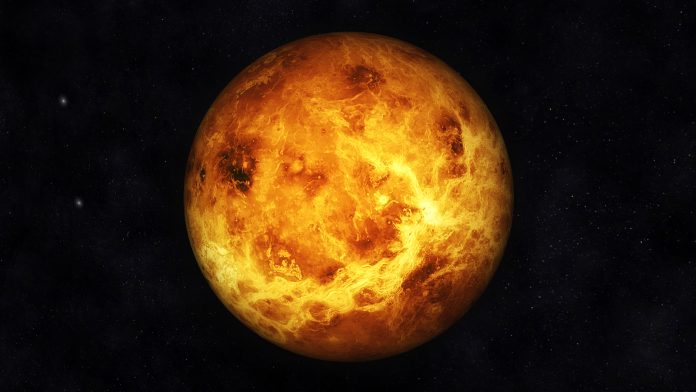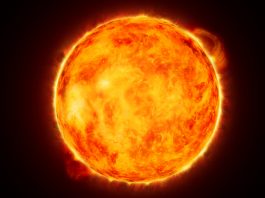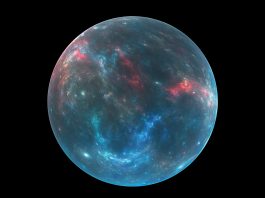The Royal Astronomical Society has today announced that an international team of astronomers have discovered phosphine in the clouds on Venus,suggesting the existence of microbes on the planet.
Researchers used the James Clerk Maxwell Telescope (JCMT) in Hawaii to detect the presence of phosphine in the clouds on Venus (a combination of hydrogen and phosphorus) – a molecule which is only naturally produced by microbes in an oxygen-free environment.
Leader of the study, Professor Jane Greaves of Cardiff University, said: “This was an experiment made out of pure curiosity, really – taking advantage of JCMT’s powerful technology, and thinking about future instruments. I thought we’d just be able to rule out extreme scenarios, like the clouds being stuffed full of organisms. When we got the first hints of phosphine in Venus’ spectrum, it was a shock.”
The team confirmed their results using 45 telescopes of the Atacama Large Millimeter/submillimeter Array (ALMA) in Chile.
Team member Dr Anita Richards, of the UK ALMA Regional Centre and The University of Manchester, said: “To our great relief, the conditions were good at ALMA for follow-up observations while Venus was at a suitable angle to Earth. Processing the data was tricky, though, as ALMA isn’t usually looking for very subtle effects in very bright objects like Venus.”
Greaves added: “In the end, we found that both observatories had seen the same thing – faint absorption at the right wavelength to be phosphine gas, where the molecules are backlit by the warmer clouds below.”
How abundant is phosphine on Venus?
Professor Hideo Sagawa of Kyoto Sangyo University, Japan, used his models for the Venusian atmosphere to interpret the data, finding that phosphine is present in around 20 molecules in every billion. The astronomers ran calculations to see if the phosphine could come from natural processes on Venus, however, the only other study of phosphorus on the planet came from one lander experiment, carried by the Soviet Vega 2 mission in 1985.
Massachusetts Institute of Technology scientist Dr William Bains assessed natural ways to make phosphine. He suggested that it could be naturally produced by sunlight, minerals from the surface, volcanoes, or lightning, although none of these could make enough to reach the levels currently present in the clouds on Venus. The sources proposed by Bains were found to make at most one ten thousandth of the amount of phosphine that the telescopes saw.
To create the observed quantity of phosphine on Venus, terrestrial organisms would only need to work at 10% of their maximum productivity, according to calculations by Dr Paul Rimmer of Cambridge University. Any microbes on Venus will likely be very different to their Earth cousins to survive in hyper-acidic conditions.
It has been previously suggested that dark streaks on Venus where ultraviolet light is absorbed could come from colonies of microbes. The Akatsuki spacecraft, launched by the Japanese space agency JAXA, is currently mapping these dark streaks to understand more about this ‘unknown ultraviolet absorber’.
The team are now awaiting further access to telescopes to establish whether the phosphine is in a relatively temperate part of the clouds, and to look for other gases associated with life. New space missions could also travel to our neighbouring planet and sample the clouds in situ to further search for signs of life.









